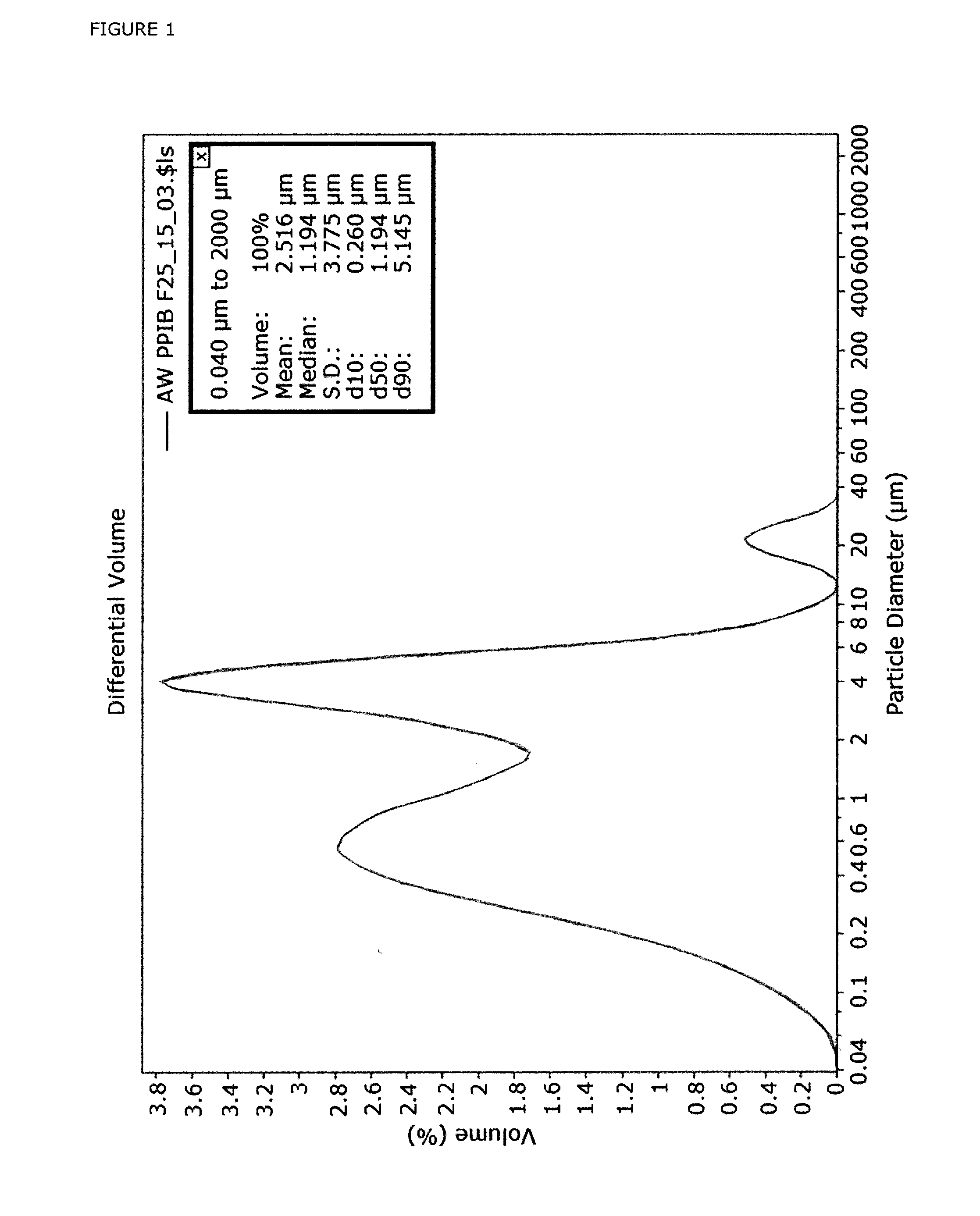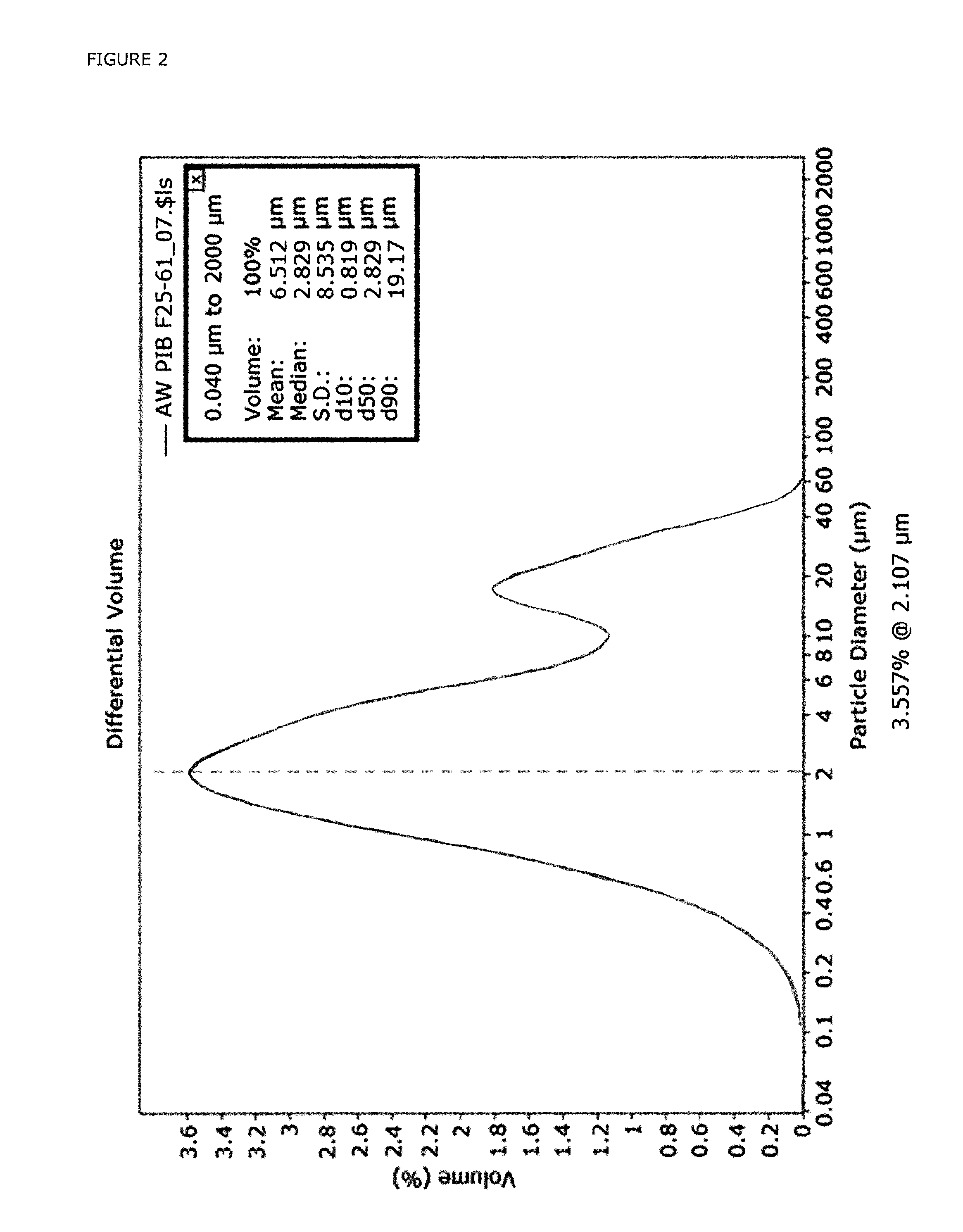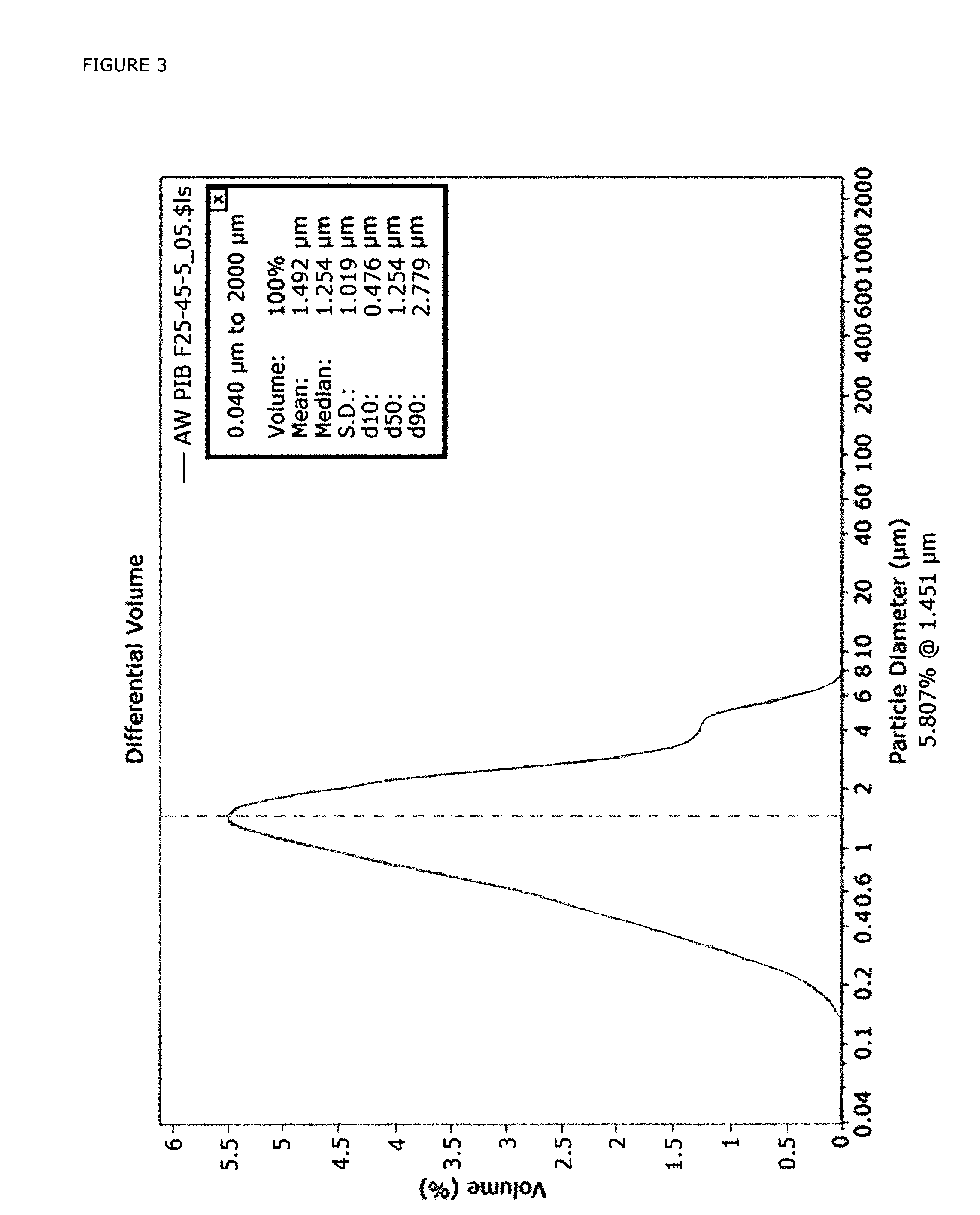Method for the preparation of stable emulsions of polyisobutene
a technology of polyisobutene and stable emulsion, which is applied in the direction of antifouling/underwater paints, coatings, biocides, etc., can solve the problems of increasing the cost price of polyisobutene emulsion, difficult to obtain stable emulsion, and difficulty in dispersing polyolefins and especially polyisobutenes, etc., to achieve high intrinsic tackiness, high dispersibility, and efficient water
- Summary
- Abstract
- Description
- Claims
- Application Information
AI Technical Summary
Benefits of technology
Problems solved by technology
Method used
Image
Examples
example 1
[0159]In a first example, compounds are weighed according to the amounts stated in Table 1.
TABLE 1Amount and type of compounds used for the preparationof an emulsion according to example 1.Oppanol B30250Stearic acid20Diethanol amine9Paraffin wax, melting point 60° C.220Biocide1Water500
[0160]220 grams of paraffin wax with a melting point of 60° C. is administered to a round-walled vessel without any baffles. Said vessel comprising said paraffin is heated to 140° C. using a heating plate. Said vessel is provided with a mixing device and the stirring rate is set at 400 rpm.
[0161]250 grams of Oppanol B30 is cut in small pieces of a maximum weight of 3 grams and is administered gradually to said vessel comprising said paraffin such that Oppanol B30 does not coagulate. Viscosity of the mixture of paraffin with Oppanol B30 is monitored until constant, thereby obtaining a pre-mix. Then, the pre-mix is cooled down to 70° C. to 80° C.
[0162]A homogeniser is preheated by purging with hot water ...
example 2
[0170]
TABLE 3Amount and type of compounds used for the preparationof an emulsion according to example 2.Glissopal V1500465.9Stearic acid17.7Diethanol amine7Steareth-108.4Biocide1Water500
TABLE 4Selected physical properties of theemulsion according to example 2.Solid content (%)50.13Density0.9417g / mlBrookfield viscosity (LV-2, 100 rpm)82.2mPa · sStability (*) (% H2O separation)8
example 3
[0171]
TABLE 5Amount and type of compounds used for the preparationof an emulsion according to example 3.Glissopal V640599Polysorbate 4015Polysorbate 6015Biocide1Water370
TABLE 6Selected physical properties of theemulsion according to example 3.Solid content (%)63.13Density0.9106g / mlBrookfield viscosity (LV-2, 100 rpm)225mPa · sStability (*) (% H2O separation)10
PUM
| Property | Measurement | Unit |
|---|---|---|
| particle size | aaaaa | aaaaa |
| particle size | aaaaa | aaaaa |
| particle size | aaaaa | aaaaa |
Abstract
Description
Claims
Application Information
 Login to View More
Login to View More - R&D
- Intellectual Property
- Life Sciences
- Materials
- Tech Scout
- Unparalleled Data Quality
- Higher Quality Content
- 60% Fewer Hallucinations
Browse by: Latest US Patents, China's latest patents, Technical Efficacy Thesaurus, Application Domain, Technology Topic, Popular Technical Reports.
© 2025 PatSnap. All rights reserved.Legal|Privacy policy|Modern Slavery Act Transparency Statement|Sitemap|About US| Contact US: help@patsnap.com



